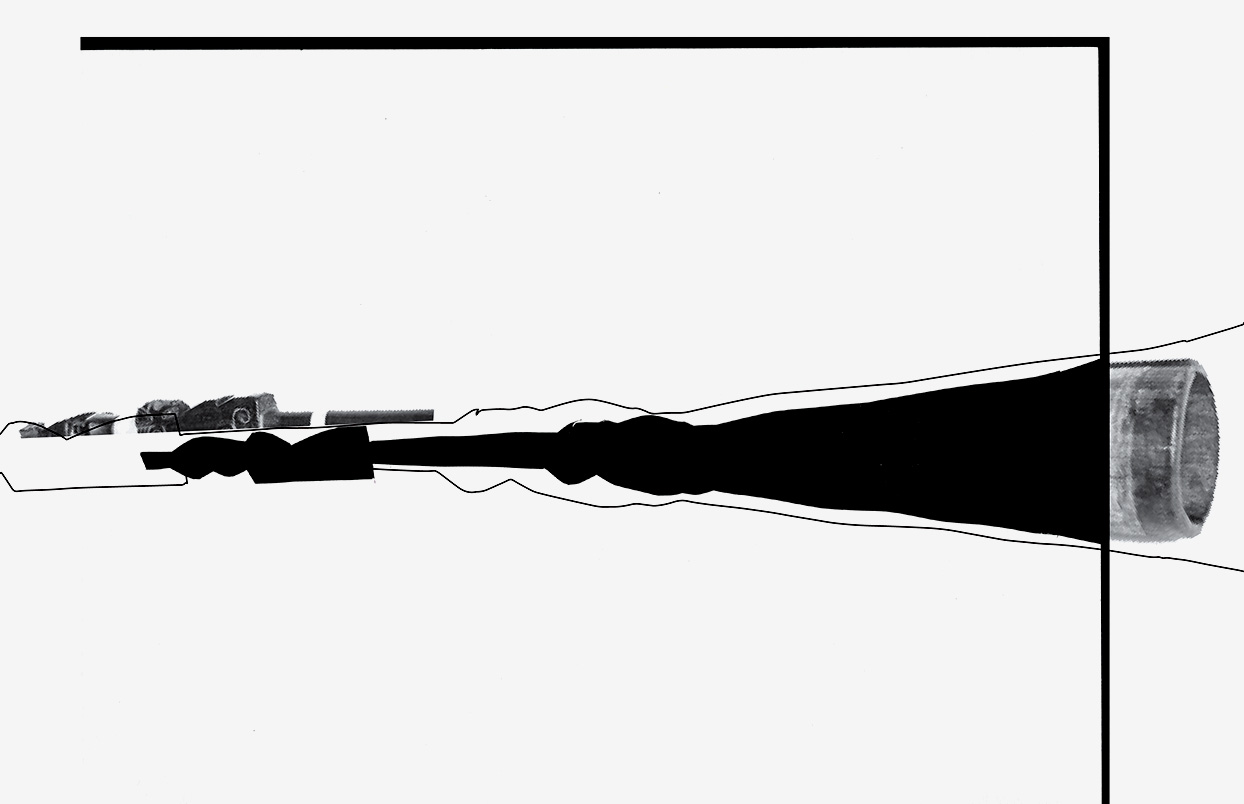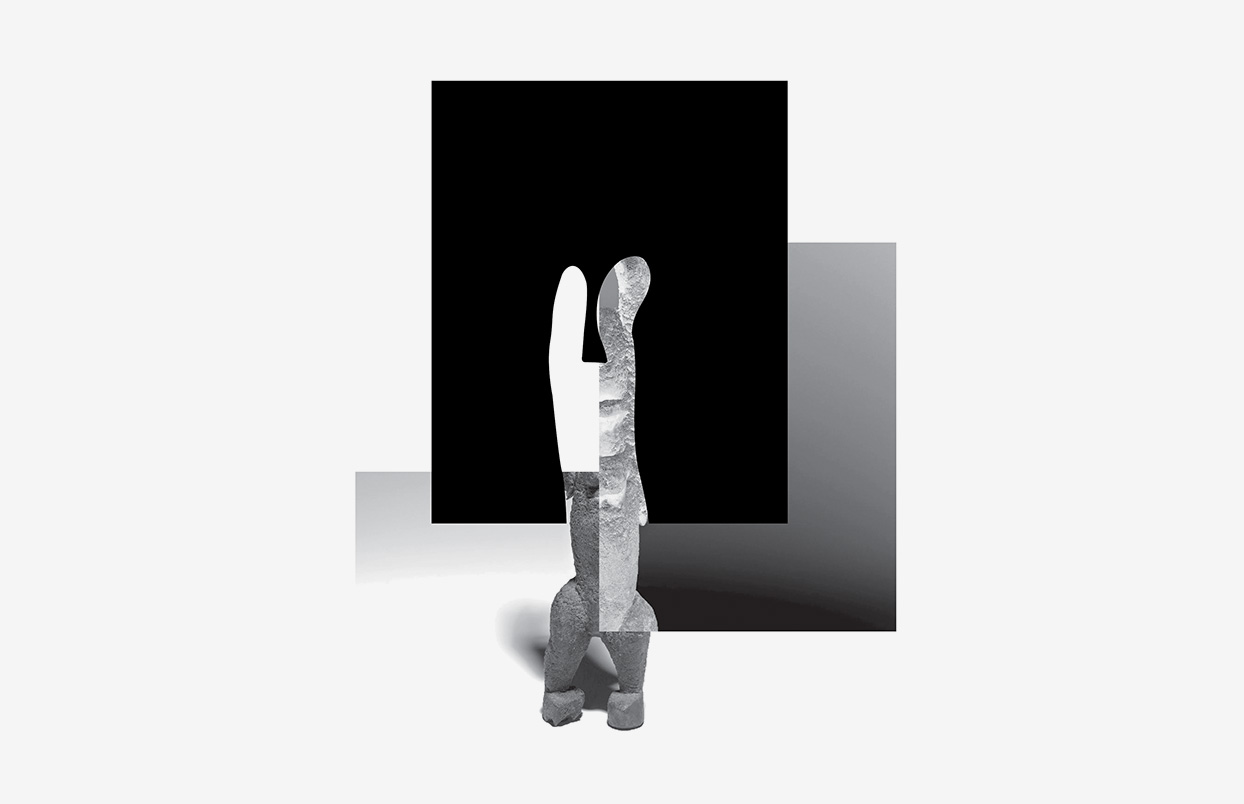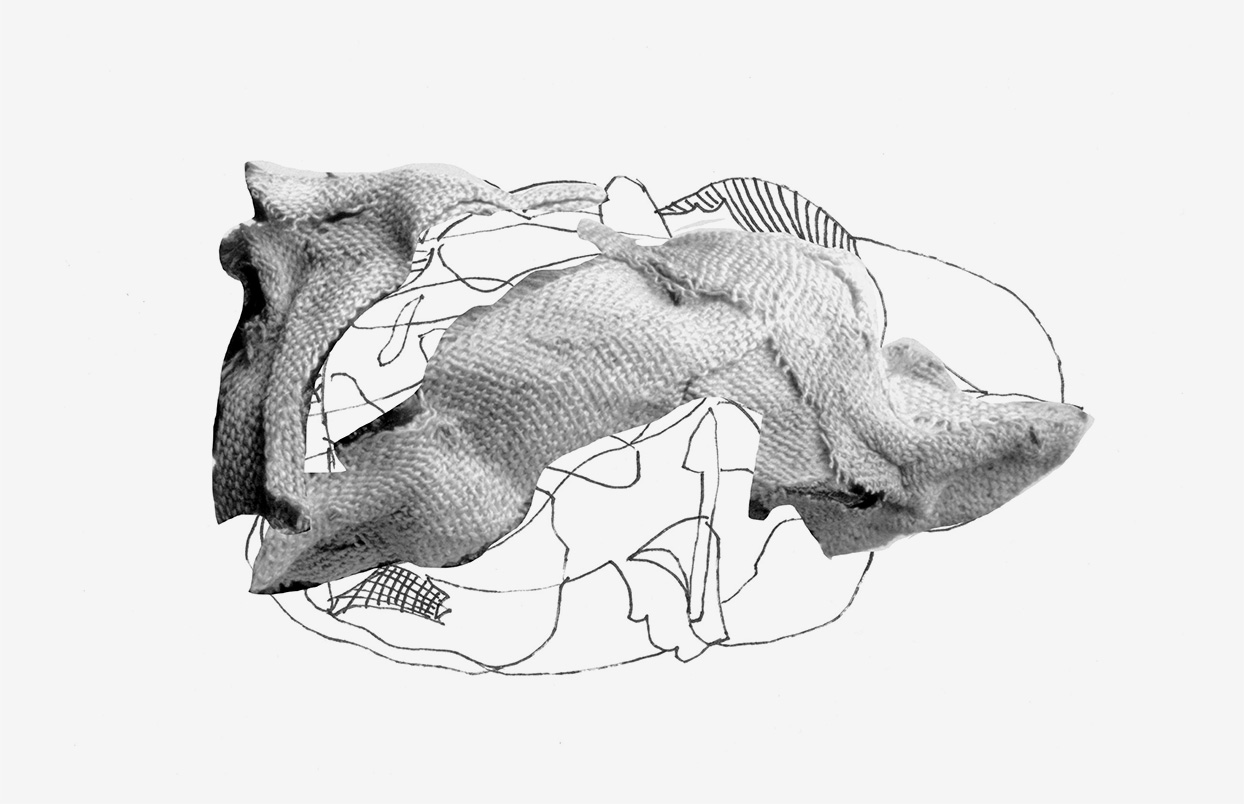Temporarily Removed
July 4, 2016artist contribution,
This text and image work, part of the Open! COOP Academy series Between and Beyond, explores the violence of museum display particularly with respect to ethnography. Since the emergence of ethnography, cultural objects have been taken out of their immediate contexts and rearranged for the purpose of Western humanist study. While the arranger remains out of sight, objects are displaced into a taxonomy of otherness, appropriated by a single story that leaves them incomplete. In fact, the objects seem absent, rendered invisible by layers of interpretation and projection. ‘Temporarily Removed’ suggests that the objects removed from their original context could someday be returned; it also explores the space of objects around and beyond the museum. Reflecting on how the original contexts of these objects might resonate today, and how things-turned-artefacts relate to their current environment and need to be integrated into new networks of relations, might bring us closer to an inclusive posthumanist thinking.
Zones of extraction become sites of extinction, geographies of sacrifice.
—Ian Boale
Magic Oracle, TM-0-6
It has been here for some time now, held by an anonymous metal arm that never tires of holding it. Framed by glass, one could take the magic oracle for a figure, a statue or an artefact – a magic transformation so naturally performed on this stage, otherwise filled with absence. Absence of smell, absence of feel. A naked, orphan-like condition, out of time and out of direction. Hiding behind the oracle, attached to the wall and to its anonymity, the metal arm has taken on the colour of the wall: orange. In the museum Africa is orange. Seemingly blending in, yet inevitably standing out. Its role, in fact, is quite essential in this play, physically elevating the oracle, while silently securing and perpetuating its transformation from thing to museum artefact.
Mogol
Helvetica
Bold
Mask
White
Axe
Caps
Floating
Pole
Black
Spotlight
Shield
Glass
Sword
Long
A Case for Pencils
Standing unassumingly in the background, the case seems uncertain. Has it made a new start? Like its birthplace, Minakuchi, a town swallowed by the twenty-first century. On 1 October 2004, along with the towns of Kōka, Kōnan, Shigaraki and Tsuchiyama, Minakuchi was merged to create the city of Kōka. Similarly, this case was merged with hundreds of objects in the creation of a museum. The pencil case sits inside the display case, inside the museum, deprived of the delicate odours that connect it to its origins. Its straw is fabricated from the heart-shaped leaves of the Katsura tree, also known as ‘Amazing Grace,’ or ‘Tidal Wave,’ whose autumn scent resembles burnt toffee (UK), cinnamon (PT), burnt brown sugar (NL), or cotton candy (US), depending on cultural reference. Of course, these are but the limited associations of the colonizers. The Katsura tree, meanwhile, weeps.
Sake Jar with Lid
A jar’s emptiness is not necessarily a pessimistic void. Rather, it is an optimistic latency that anticipates replenishment – a state this sake jar might have enjoyed before its fragile shape became double locked, first by its own lid, and indefinitely by the vitrine. Aware that it would never be filled with anything other than an aesthetic function, it retreated. In fact, the jar is not here, it withdrew a long time ago into an uneasy oscillation, so fine, so exquisite and unresolved.
Trumpet, RV-360-8157

This kind of trumpet is often associated with the proceedings of a shaman. The sound is produced by the vibrations of the lips of the player. Different tube lengths produce different sounds. In some cases, musical instruments were produced in the Amazon region in order to imitate the sound of a specific animal. It is not unlikely that this trumpet served to imitate the roar of the jaguar. Of elongated shape these exceptionally carved instruments have fine incised geometric designs on the surface and an openwork ribbed design at the sound hole. Their sleek contour is well defined, yet without boundary, as far as the sound goes. They live off sound, expressing generous, invasive blasts while absorbing smothered voices and subtle cracks of nearby movements in a process of expansion like that of a plant’s roots. They take a lavish, perhaps somewhat obsessive delight in savouring the tones and vibrations that reach them. Fused with the echoes from their past, the sounds amplify while deepening, before being released, now wholly altered, infiltrating and cutting through the space.
Bell
Operating as an optical machine, the museum strictly strips its possessions of anything sensory. For smell, touch or sound are no longer required for things in their new role as artefacts. The museum label states that the bell once frightened enemies during battle. Instead, a speechless void now amplifies its violent separation from the ancestor altar in the Edo kingdom, located on a rolling coastal plain crossed by rivers, in an area of tropical rainforest, at a site today known as Benin City, Nigeria. The silence, however, is not merely the absence of the sound of a bell, like a fugitive holding its breath. Silence also emerges from the spectator, like an outstretched arm, wearing an archival glove, smothering sounds. It is an active silence, complicit in the creation and continuation of the construction of the ‘other’ that is keeping them at bay. Western consumption of Nigerian artefacts seems unlimited, while European frontiers are kept firmly closed for the descendents of its makers. Ultimately, to borrow from Clémentine Deliss, an object is a migrant too with its partial knowledge, partial identities and incompleteness.1 This bell, then, is no longer a bell, but the image of a complicit silence.
Rainmaker Figure, AM-259-22

Yesterday the alarmed people refused us a number of 'rainmaker' figures, as well as a figure with raised arms that we had found in another sanctuary. A bandit mentality: as we took our leave that morning from the elders who were so glad that we had been so good as to consider their feelings, we nervously eyed the enormous green parasol under which we normally sought shelter and which was now carefully folded up. Swollen up as though by a strange tumour in the form of a beak of a pelican, it now contained the figure with raised arms that I myself had stolen from the foot of the altar belonging to this and other figures. I had first put her under my shirt… and then in the parasol… while pretending I had to urinate in order to divert attention.2
They never really got used to their place in the spotlight. Their preferred place is in the dark, where they can elongate endlessly while regressing in one serene, interlacing movement. A place they do not need to see, because it is vividly present. In their current confinement, however, their movement is arrested, captured by an ongoing gaze, which nonetheless fails to see them. Removed from obscurity, their height was measured, their weight weighed, their colour ranked, their surface surveyed, their patterns marked, their value rated, their transformation labelled Rainmaker Figure, TM-3912-934, Bandiagara, Mali, Western Africa. The spotlight immobilized all energy in a way they never experienced before the transformation. Were the captivated captors to turn off the light, it would instantly illuminate the dormant emotional residue, and reactivate layers of lives, transforming the imposed limit of the gaze, into an active multiple perspective, a motion of withdrawal while simultaneously rising upwards.
Africa
Crocodile
Glass
Snake
Wood
White
Foot block
Neck rest
Ink
Plate
Its round shape is interrupted by the hooks of the black plastic plate holder. A holder to fixate the plate from a desire to own, a desire to contain, a desire to frame, a desire to incorporate, a desire perhaps too, for it to perform as a mirror to the spectator, reflecting the image of its courageous captor. The plate is decorated with a dramatic carp, which has what appears to be smoke emanating from its mouth with the image of a dragon within it. The border is of swirling water with flower heads. In this world, rather than on top of the table, its place is at the bottom, in the shadows, just above the label that states it was made at Jingdezhen, in Jianxi Province, China. The plate is part of a table service of ‘Nyonya’ ware, which derives from the term used for the wives and daughters (Nyonyas) and men (Babas) of the Peranakan or Straits Chinese community for whom it was made. The plastic holder has no label, but one can speculate that it originates from China too, made in one of the many factories in the neighbouring manufacturing region of Guangdong, Southeast China. Here they meet, the plastic and the porcelain, in front of the glass, which, like the omniscient sky, is always there, allowing a glimpse into its universe, without ever really giving away its intentions.
Snow Goggles, RV-1071-6

Light is their purpose, and their counterpart at the same time. As eyes of the eyes, they preserve sight, in an attempt to protect it from whiteness and blindness, or krotla. When Danish clergymen arrived in Greenland and converted the Tunumiit people in the Ammassalik district to Christianity, many original rituals were abandoned. Accordingly, a good deal of the knowledge about them has been lost. Synomyms for ‘white’ are: clear, neutral, immaculate, transparent. What is the blind spot that associates white with neutrality? A blindness that the goggles are not equipped to prevent, for the optical illusion of impartiality is as convincing as priyakli, or snow that looks like it is falling upwards.
Black
Spotlight
Ancestor
Thread
Brown
Batak
Traditional
Wood
Indonesia
Pedestal
Glass
Map
Magical Mirror
Layer upon layer of encounter and exchange have steadily built its complex shape. Layers of contemplation, of curiosity, of exposure; layers of skill, of intimacy; layers of caution, of impatience, of observation. Unimpressed by the attention on its exterior, it reflects the vanity of the captivated spectator right back. Who is seeing who? The mirror captures the gaze, without hesitation, through the promise of infinity, while suspending its knowledge. Imposed meanings find no traction on its polished surface. The mirror speaks for itself, confident in expressing entirely opposing observations, always open to receive, and to brutally reciprocate.
Mummified Scarab, APM10186

Sensitive to the extension of space, its emptiness quickly fills with the confessions of those around. The shame of the nearby amulet, the sorrow of the canopic jar, the impatience of the coins. Carefully storing the thoughts and memories, as fertile spaces of resurrection. This impulse to extract does not find its origin in a desire to destroy, nor to please. It likes to be at the heart of the matter, where it longs for a reawakening. In this space of reverie, these confessions are its only embrace in the measureless void that marks its current situation.
What about its own confessions? What about the impulse to preserve?
1. Clémentine Deliss, 'Collecting Life’s Unknowns,' Decolonising Practices, L'internationale, 11 June 2015, www.internationaleonline.org.
2. Michel Leiris, L'Afrique fantôme (Paris: Gallimard, 1988 [1934]), 373.
Mirjam Linschooten is a visual artist working with installation, publication, collage and photography. Her work is concerned with tactics of representation and questions the way memory and history are constructed through various forms of collecting, interpreting and display. She has participated in several artists’ residency programmes and has exhibited in various countries including Canada, Egypt, France, Morocco, the Netherlands, Turkey and the United States. Mirjam completed her Bachelor of Graphic Design at the Gerrit Rietveld Academie, Amsterdam and is currently enrolled in the MA Art Praxis programme at the Dutch Art Institute, Arnhem.